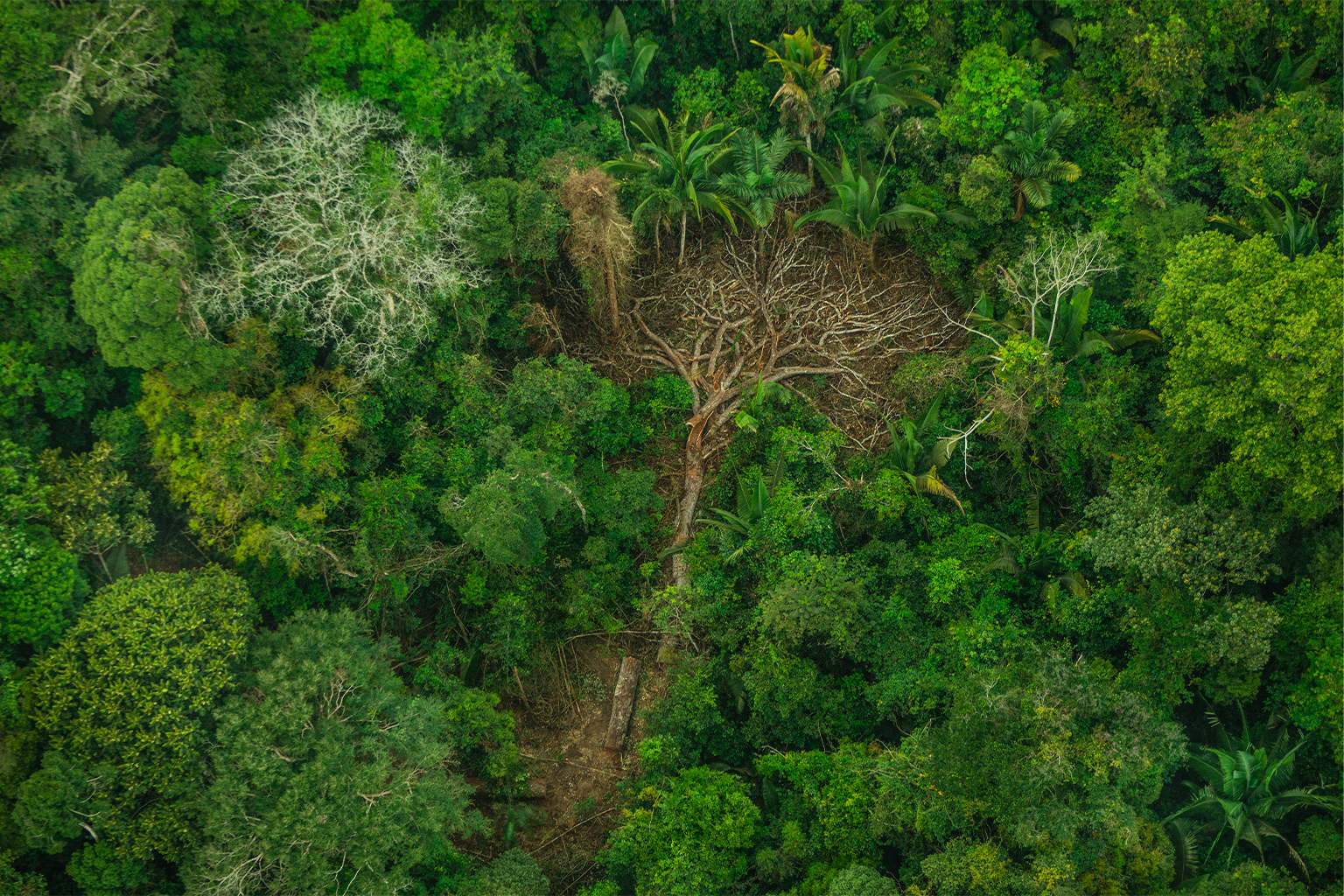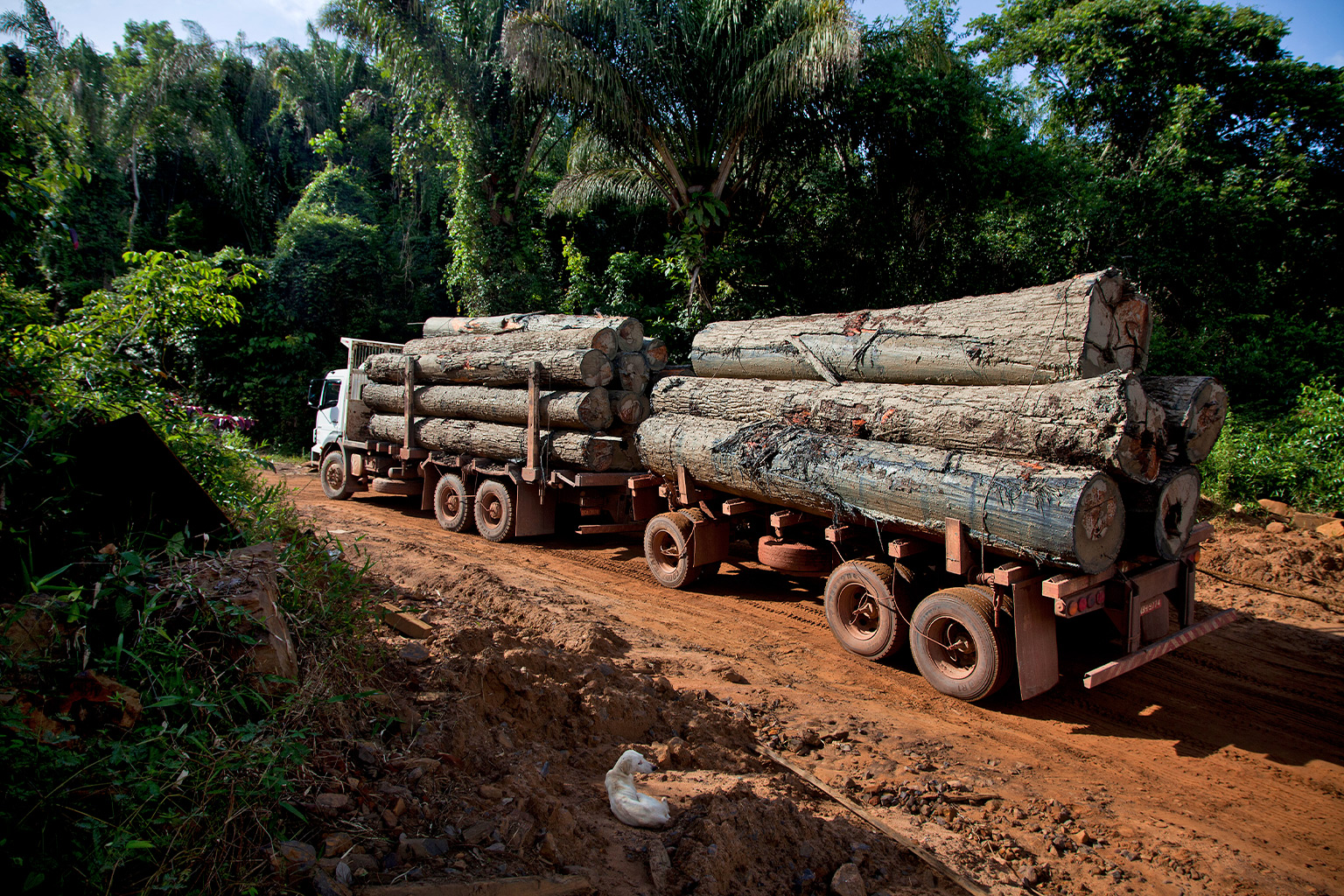- A new study supports mounting evidence that deforestation in the Amazon Rainforest correlates with a reduction in regional rainfall.
- Experts say this research reinforces the findings of other studies that claim the Amazon is leaning toward its “tipping point” and the southern regions are gradually becoming drier.
- Environmentalists see this research as an opportunity to reshape conservation activism and policy towards local communities.
Scientists and activists have tirelessly campaigned for the protection of forests to mitigate rising global temperatures and preserve humanity’s future. For some local Amazonian communities, who depend on logging, mining and ranching, these claims have stood in the way of their livelihoods, creating a standoff between conservationists and deforesters.
But a new study shows that these local communities should be alarmed about the future of their environment too. It confirms what scientists and activists have been saying for years: Human-led deforestation in the Amazon Rainforest is causing irregular rainfall patterns not only around the globe but at a local level, leading to conditions that wreck ecological cycles and cripple communities that live in deforested areas. Experts hope this growing body of compelling evidence will encourage decision-makers to create protection policies that can engage these communities as well.
The study published in the journal Nature on March 1 used satellite-based precipitation datasets from 2003 to 2017 to reveal that tropical forest loss in the Amazon, Congo and Southeast Asia causes significant decreases in annual mean rainfall. Even deforestation on a small scale caused some decline, but the greatest impact was observed in areas larger than 2,500 square kilometers (965 square miles) where a reduction of evapotranspiration — the pumping of moisture from trees into the atmosphere — is most dominant. At the largest scale measured — 40,000 square kilometers (15,444 square miles) of affected area — monthly rainfall was 0.25 percentage point (or 0.1 mm) lower for every 1 percentage point of forest loss.

“The key thing that we do differently is that we’ve got a range of spatial scales, so we can understand at the different size scales if there’s any differences in precipitation,” Callum Smith, a researcher at the University of Leeds and the lead study author, told Mongabay by video call. “It gives us more information about what it is about tropical deforestation that most affects the climate in terms of precipitation.”
This approach has allowed the researchers to account for influencing climate factors, such as El Niño and La Niña, and demonstrate a clear correlation between human activity and reductions in regional rainfall.
The results strengthen the case of the Amazon Rainforest’s vulnerability to human activity. “The main message to me is that this study reinforces the understanding that deforestation reduces rainfall, which reduces forest resilience and increases the risk of tipping points and negative impacts on local economic activities,” Bernardo Flores, a scientist in ecosystem resilience at the Federal University of Santa Catarina who wasn’t involved in this study, told Mongabay by phone. The “tipping point” is when the hydrocycle degrades and the drier conditions transform the Amazonian vegetation into a savanna — a process that some scientists say is close to happening in parts of the Amazon.
Carlos Nobre, one of the researchers who first identified the Amazon’s tipping point in 2018, told Mongabay by email that the dry season is four to five weeks longer now in the Southern Amazon than compared with 1970. “It is very urgent to get to zero deforestation, degradation and wildfires all over that area and across all the Amazon forest before 2030,” he wrote.

Proliferating damage
The study also gives scientific clout to grassroots stories about the effects of increasingly drier weather conditions and adds to the mounting proof of Amazonian communities being impacted by climate change. “People on the ground say that when forest is lost, it’s drier and hotter,” Smith said. “But it’s been difficult to really pin that down in observations before. The scale approach that we’ve taken has unlocked that, so we could understand these observations better.”
Case studies indicate how far the effects of the Amazon’s changing climate can be felt. In Lucas do Rio Verde, a municipality in Brazil’s agricultural powerhouse state of Mato Grosso, producers are experiencing losses as they struggle to produce their usual second crop of corn, Raul Valle, director of social and environmental justice at WWF, told Mongabay by phone. Even farther away, producers in Rio Grande do Sul state are in a third year of drought, causing billions of reais in production losses, he added. Estimates from the Federation of the Associations of Rio Grande do Sul Municipalities predict losses will be more than 12 billion reais ($2.3 billion).
“It is not solely and exclusively due to Amazon deforestation; we know the climate system is complex. But there is no doubt that this deforestation also contributes to these losses,” Valle said.
These far-reaching effects can be partly understood by the length scale of moisture recycling. “The trees make their own rain,” Smith explained. “Rain falls on the trees and then they pump it back out into the atmosphere and trees downwind rely on that precipitation recycling effect,” he said. The length scale of moisture recycling can be up to an average of 600 kilometers (373 miles) in the Amazon. Up to 70% of precipitation is sourced from upwind evapotranspiration, meaning the fewer trees upwind, the less rainfall and much drier the downwind regions become.
“Tropical forest loss could therefore have severe implications for precipitation in these regions that are hundreds to thousands of kilometers downwind of the forest loss,” according to the study.


A ‘complete revamp’ of public policies
Creating policies to protect the Amazon is more than just focusing on reducing global carbon emissions, experts claim. Instead, the impact of deforestation on local communities needs to be brought to the forefront and policies need to support regional climate resilience.
“As someone who lives in the UK, we have this perspective as a society of the Amazon as something that needs saving so that we can claim carbon credits and do our bit to lock up carbon,” Smith said. “Any policy that comes out of this research really should be staying inside the countries and working to better the communities that actually live there.”
According to Marcos Heil Costa, an environmental engineering professor at the Federal University of Viçosa, there are proposals in Brazil to create public policies based on payment for ecosystem services, which financially incentivizes private landowners to protect the forest. “The idea is that a mechanism can be established to pay landowners to not deforest,” Costa told Mongabay by phone. “They can receive an annual income if they preserve more than they are required to under the Brazilian Forest Code.” The Brazilian Forest Code states that landowners in the Amazon must protect up to 80% of their land — in other biomes, it drops to 20%.
According to Valle, loose legislation that fails to punish those who illegally invade and occupy rainforest territory for agricultural purposes is a “powerful incentive” to continue removing trees, despite monetary incentives to preserve the land. “Agricultural expansion becomes horizontal because it’s very profitable from an individual point of view,” Valle said.

Recent promising changes in Brazilian policy are aimed at protecting the Amazon and all the country’s biomes, but experts warn that policies could continue to be created in favor of agricultural development. “We need an almost complete revamp of our public policies to adapt to this new evidence,” Valle said. The challenge of such an overhaul includes the opposition from the influential agribusiness lobby in Congress, “who continue to support projects that induce more deforestation.”
However, policies centered on preventing deforestation and building regional resilience benefit the agricultural groups in the long run because less rainfall means more challenges to produce large yields. Valle claims the first step required is to highlight the long-term advantages of sustainable development to agribusiness leaders and challenge the deep-rooted perspective of “the more you deforest, the better it is because that’s how it was in the past,” he said.
Experts say more studies are also required to better channel local needs into effective legislation. “A major front line in terms of research today is how to translate these non-carbon ecosystem services and put them into actual policies,” Costa said.
Banner image: Logging in the Amacro region, the triple border between Brazilian states Acre, Amazonas and Rondônia. This region has been subjected to intensive deforestation, illegal occupation of public lands, mining, human-made fires, and extensive logging. Image © Bruno Kelly/Greenpeace.
Citations:
Smith, C., Baker, J. C., & Spracklen, D. V. (2023). Tropical deforestation causes large reductions in observed precipitation. Nature. doi:10.1038/s41586-022-05690-1
FEEDBACK: Use this form to send a message to the author of this post. If you want to post a public comment, you can do that at the bottom of the page.
How close is the Amazon tipping point? Forest loss in the east changes the equation
